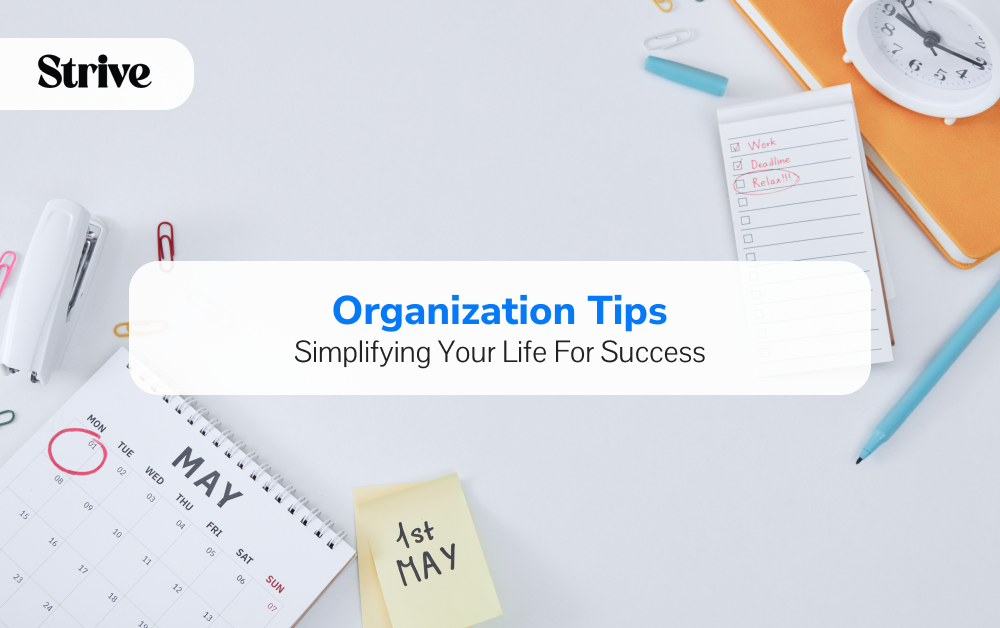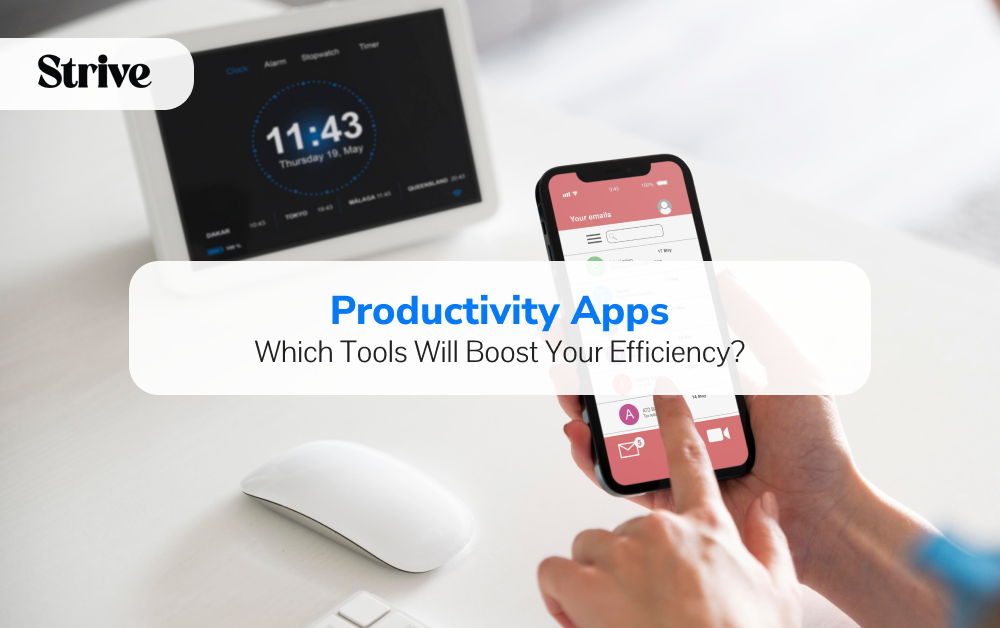Have you ever struggled to stay motivated in your fitness journey? Do you find yourself wondering how to effectively set and achieve your fitness goals? It’s time to put an end to the frustration and take control of your physical well-being!

In this article, we will explore practical strategies and proven techniques to help you define and achieve your fitness goals. Whether you’re a beginner or an experienced fitness enthusiast, understanding the art of goal setting is essential for making progress and staying motivated along the way.
Are you ready to set yourself up for success? Let’s dive in and discover the power of effective fitness goal setting!
Key Takeaways:
- Setting clear and achievable fitness goals is crucial for staying motivated and tracking your progress.
- Choosing the right goals based on your current fitness level and individual circumstances is key to success.
- Utilizing strategies such as visualization, breaking goals into smaller parts, and creating daily goal-supporting habits can help you stay focused and determined.
- Tracking your progress and making necessary adjustments along the way is vital for achieving your fitness goals.
- Celebrating milestones and rewarding yourself for your accomplishments can provide additional motivation and reinforce positive behaviors.
The Importance of Setting Fitness Goals
Setting fitness goals is essential for individuals seeking to improve their physical well-being and lead a healthier lifestyle. By establishing clear objectives, individuals can stay motivated, track their progress, and make necessary adjustments along the way. The benefits of goal setting for fitness are far-reaching, encompassing both physical and mental well-being.
One of the primary advantages of setting fitness goals is that it provides individuals with a sense of direction and purpose in their fitness journey. When you set goals, you define what you want to achieve and create a roadmap to guide your actions. This clear direction helps you stay focused and committed to your fitness routine.
Moreover, setting fitness goals serves as a powerful source of motivation. Having specific targets to work towards encourages individuals to push themselves beyond their limits and strive for continuous improvement. By tracking progress towards their goals, individuals can witness their accomplishments, boosting their confidence and fueling their enthusiasm to persevere.
Another benefit of goal setting for fitness is the ability to make necessary adjustments along the way. As individuals track their progress, they can identify what strategies are working and what needs improvement. This self-awareness allows for flexibility and adaptability in the pursuit of fitness goals, ensuring that individuals stay on track and take the necessary steps to overcome obstacles.
Image not displayed.
The Link Between Goal Setting and Improved Well-being
When individuals set fitness goals, they embark on a transformative journey that positively impacts their physical and mental well-being. Achieving fitness goals enhances physical health by improving strength, endurance, flexibility, and overall fitness levels. It reduces the risk of chronic diseases, increases energy levels, and promotes better sleep patterns.
Beyond the physical benefits, goal setting for fitness also has a profound impact on mental well-being. Accomplishing goals boosts self-confidence, instills a sense of achievement, and enhances self-esteem. It provides individuals with a sense of purpose and increased overall satisfaction with life. Furthermore, regular physical activity releases endorphins, commonly known as “feel-good” hormones, which contribute to improved mood and reduced stress levels.
Examples of Fitness Goals
When setting fitness goals, it is important to have clarity and specificity. Here are some examples of fitness goals that individuals may choose, depending on their preferences and current fitness level:
| Goal | Description |
|---|---|
| Complete a 5k run | Participate in and complete a 5-kilometer running event within a specific timeframe. |
| Lose 10% body weight | Achieve a weight loss goal of 10% of your current body weight through a combination of diet and exercise. |
| Perform 10 consecutive push-ups | Build upper body strength and endurance to be able to do 10 push-ups in a row without stopping. |
| Attend fitness classes twice a week | Commit to attending fitness classes or group workouts at least twice a week to improve overall fitness levels. |
It is important to note that fitness goals should be personal and tailored to an individual’s abilities and preferences. This ensures that the goals are realistic, achievable, and promote consistent progress.
In the next section, we will discuss strategies for choosing the right fitness goals that align with your abilities and desires.
How to Choose the Right Fitness Goals
When it comes to choosing fitness goals, it’s essential to think about your current level of physical fitness and what you want to achieve. Selecting the right goals is crucial for setting yourself up for success on your fitness journey. To guide you in this process, consider the following techniques:
- Be Specific: Instead of general goals like “get fit,” choose specific targets that are measurable and clearly defined. For example, aim to run a 5K race within three months.
- Make Them Measurable: Set goals that can be quantified and tracked. This way, you can monitor your progress and make adjustments along the way. For instance, specify that you want to increase your upper body strength by being able to perform ten push-ups consecutively.
- Achievable and Realistic: Ensure that your goals are within reach and aligned with your capabilities. Setting unattainable targets can lead to frustration and disappointment. Start with small steps and gradually work your way up.
- Relevance Matters: Your fitness goals should align with your personal interests, preferences, and overall well-being. Choose activities that you enjoy, whether it’s cycling, dance classes, or weightlifting.
- Time-Bound: Set a timeframe for achieving your fitness goals. This helps create a sense of urgency and allows you to measure your progress effectively. For example, aim to lose 10 pounds within three months.
By following these principles and incorporating SMART goals (Specific, Measurable, Achievable, Relevant, and Time-Bound), you can choose fitness goals that are challenging yet attainable. Remember to consider your individual circumstances, strengths, limitations, and personal preferences when setting your goals.
Visualizing success and focusing on the process rather than immediate results can also enhance your goal-setting experience. Stay motivated, persevere through challenges, and celebrate small milestones along the way. The path to achieving your fitness goals is unique to you, so choose wisely and enjoy the journey.
Strategies for Effective Fitness Goal Setting
To set and achieve fitness goals effectively, it is essential to use a combination of strategies that will keep you focused, motivated, and engaged in your fitness journey. Whether you are just starting or have been on the path to better health for some time, these strategies will help you set realistic goals and increase your chances of success.
- Visualization: Visualize your desired outcome and imagine yourself achieving your fitness goals. Picture yourself feeling strong, confident, and accomplished. By visualizing success, you can boost your motivation and stay committed to your goals.
- Break big goals into smaller parts: Rather than setting one overarching goal, break it down into smaller, more manageable milestones. This approach allows you to track your progress and provides a sense of accomplishment along the way. Celebrating these smaller victories can help you stay motivated and on track.
- Create daily goal-supporting habits: Incorporate habits and behaviors into your daily routine that support your fitness goals. This could include activities like meal planning, setting aside time for exercise, or practicing mindfulness. By establishing consistent habits, you are more likely to stay focused and make progress towards your goals.
- Set challenging but achievable goals: It’s important to set goals that push you out of your comfort zone but are still realistic and attainable. Striking this balance will keep you motivated and prevent you from feeling overwhelmed. Remember, progress is made by taking small steps towards a larger goal.
- Enjoy the process: Embrace the journey towards achieving your fitness goals, rather than solely focusing on the end result. Find joy in every workout, challenge yourself to try new activities, and surround yourself with a supportive community. By enjoying the process, you’ll be more likely to stay committed long-term.
By implementing these strategies, you can enhance your fitness goal-setting experience and increase your chances of success. Remember, effective goal setting is not just about the end result, but also about enjoying the journey and making lasting lifestyle changes.
Examples of Attainable Fitness Goals
Setting attainable fitness goals is crucial for maintaining motivation and seeing progress in your fitness journey. Here are some examples of achievable fitness goals that can be customized to suit different fitness levels and preferences:
1. Running a 5K
Completing a 5K race can be a great goal for beginners or those looking to improve their cardiovascular endurance. Start by incorporating regular running or jogging sessions into your routine and gradually increase your distance and pace over time. Sign up for a local race to keep yourself accountable and motivated.
2. Increasing Strength
If you’re looking to build strength, setting goals to increase your weights or repetitions in specific exercises can be effective. For example, aim to add 10 pounds to your squat or perform an additional set of pull-ups. Regularly track your progress and adjust your training program accordingly.
3. Improving Flexibility
Flexibility is an essential component of overall fitness and can help prevent injuries. Set goals to improve your flexibility by incorporating stretching exercises into your daily routine. Aim to touch your toes or increase your range of motion in specific stretches, such as the seated forward bend or standing quad stretch.
4. Engaging in Regular Cardiovascular Exercise
Regular cardiovascular exercise is important for heart health and overall fitness. Set goals to engage in aerobic activities, such as walking, swimming, cycling, or dancing, for a certain duration or distance each week. Gradually increase the intensity or duration to continue challenging yourself.
5. Practicing Mindfulness
Mindfulness exercises, such as meditation or yoga, can improve both mental and physical well-being. Set goals to incorporate mindfulness practices into your daily routine. Start with a few minutes of meditation or attend a yoga class once a week, and gradually increase the frequency and duration as you become more comfortable.
Remember, the focus should be on setting goals that are challenging yet attainable based on your current fitness level and preferences. Regularly track your progress, celebrate milestones, and make necessary adjustments to continue moving forward on your fitness journey.
Stay Positive and Overcome Challenges
When it comes to fitness goal setting, staying positive is key. It’s important to remember that progress takes time and setbacks are a natural part of the process. By developing a positive mindset and adopting strategies to overcome challenges, you can stay motivated and on track towards achieving your fitness goals.
A positive mindset can make all the difference in reaching your fitness goals. Instead of dwelling on mistakes or setbacks, focus on what you have accomplished and the progress you have made. Celebrate even the smallest victories along the way, whether it’s completing an intense workout or sticking to a healthy eating plan for a week. By celebrating these small achievements, you can boost your confidence and maintain your motivation.
Another helpful strategy for staying positive is seeking support from others. Surrounding yourself with like-minded individuals who understand your fitness journey can provide encouragement, accountability, and motivation. Join a fitness community, hire a personal trainer, or find a workout buddy to share your goals and challenges with. Having someone to lean on during challenging times can make a significant difference in your mindset and overall success.
In addition to staying positive and seeking support, overcoming challenges is essential for achieving your fitness goals. Identify the specific challenges that you face and develop strategies to overcome them. For example, if lack of time is a challenge, consider waking up earlier or squeezing in quick workouts during your lunch break. If lack of motivation is an issue, find activities or exercises that you genuinely enjoy and look forward to.
Overcoming challenges also includes staying committed to your fitness goals even when things get tough. There may be days when you feel tired, unmotivated, or discouraged. During these times, remind yourself of the reasons why you started on this fitness journey and the benefits you will reap from achieving your goals. Push through the challenges, and remember that each step forward, no matter how small, brings you closer to your ultimate fitness destination.

Strategies for Staying Positive in Fitness Goal Setting
| Strategy | Description |
|---|---|
| Emphasize Progress | Celebrate small victories and track your progress to stay motivated. |
| Seek Support | Join a fitness community or find a workout buddy for encouragement and accountability. |
| Identify and Overcome Challenges | Develop strategies to overcome obstacles and stay committed to your goals. |
| Nurture a Positive Mindset | Focus on the positive aspects of your fitness journey and avoid dwelling on setbacks. |
Tracking Progress and Making Adjustments
Tracking your progress is a crucial component of achieving your fitness goals. By regularly monitoring your progress, you can assess your achievements, make adjustments when necessary, and stay accountable to your goals. There are various tools and methods you can utilize to track your fitness goal progress and make informed adjustments along the way.
Utilize Fitness Apps
Fitness apps have become increasingly popular and can be a valuable tool for tracking your fitness journey. These apps often provide features such as goal setting, workout tracking, calorie tracking, and progress analysis. By inputting your workouts, meals, and other relevant data into these apps, you can easily monitor your progress and gain valuable insights into your fitness goals.
One popular fitness app that can assist you in tracking your progress is MyFitnessPal. It allows you to log your meals, record your workouts, and track your weight. The app provides detailed reports and charts to help you visualize your progress over time.
Keep a Fitness Journal
Another effective method for tracking your fitness progress is by keeping a fitness journal. This can be done using a digital or physical journal, depending on your preference. In your journal, you can record important metrics such as workout intensity, duration, and frequency, as well as any changes you make to your fitness routine.
You can also use your fitness journal to document how you feel after each workout, your energy levels throughout the day, and any challenges or obstacles you encounter. This holistic approach to tracking progress allows you to not only monitor your physical achievements but also reflect on your overall well-being.
Take Progress Photos
Progress photos can serve as a visual representation of your fitness journey and are particularly helpful for tracking changes in your body composition. By taking photos at regular intervals, such as every two weeks or once a month, you can compare them to see any visible changes in your physique.
When taking progress photos, ensure consistency in lighting, posture, and clothing, as these factors can affect how your body appears in the images. Additionally, consider taking measurements of specific body parts, such as your waist, hips, and arms, to complement the visual progress captured in your photos.
Make Adjustments Based on Data
Regularly tracking your progress provides you with valuable data that can guide your fitness journey. By analyzing this data, you can identify patterns, trends, and areas for improvement. For example, if you notice that your strength gains have plateaued, you may need to adjust your workout routine or increase the intensity of your exercises. Similarly, if you find that you are not making progress towards your weight loss goal, you may need to reassess your calorie intake or adjust your macronutrient ratios.
Here is an example table that demonstrates how you can track your progress:
| Date | Weight (lbs) | Body Fat Percentage | Workout Duration |
|---|---|---|---|
| January 1, 2022 | 160 | 20% | 45 minutes |
| January 15, 2022 | 158 | 18% | 50 minutes |
| January 31, 2022 | 156 | 16% | 55 minutes |
By consistently tracking your progress and making adjustments based on the data you collect, you can ensure that you stay on target and continue to make progress towards your fitness goals.
Celebrate Milestones and Reward Yourself
Celebrating milestones and rewarding yourself along the way can provide additional motivation and reinforce positive behaviors. Acknowledge and celebrate the progress you have made towards your fitness goals, whether it’s reaching a certain weight or completing a fitness challenge. Treating yourself to something that aligns with your healthy lifestyle helps to maintain motivation and encourages continued commitment to achieving your fitness goals.
Here are a few ways you can celebrate your fitness goal milestones:
- Take a well-deserved break: Treat yourself to a relaxing massage or spa day to rejuvenate your mind and body. This can help reduce any stress or tension that may have built up during your fitness journey.
- Upgrade your workout gear: Invest in new workout gear or equipment that enhances your exercise experience. Whether it’s a new pair of running shoes or a fitness tracker, these new tools can add excitement and freshness to your workouts.
- Plan a healthy outing: Organize a fun outdoor activity or adventure with friends or family. Whether it’s hiking, cycling, or a group fitness class, engaging in enjoyable physical activities with loved ones can provide a sense of camaraderie and accomplishment.
Remember, celebrating your accomplishments is not about indulging in unhealthy habits or derailing your progress. Instead, aim to reward yourself in ways that align with your healthy lifestyle. For example, you can treat yourself to a healthy meal at your favorite restaurant or cook a special nutritious meal at home.
By celebrating and rewarding yourself, you not only stay motivated and positive but also reinforce the importance of your fitness goals. These celebrations act as reminders of how far you have come and inspire you to continue pushing forward.
Quote:
“Small celebrations along the way can make a big difference in your journey towards achieving your fitness goals. Take a moment to acknowledge your hard work and treat yourself for the milestones you have achieved.” – Fitness expert, Samantha Johnson
| Fitness Goal Milestone | Celebration Reward |
|---|---|
| Reaching a target weight | Eating a healthy meal at your favorite restaurant |
| Completing a fitness challenge | Shopping for new workout clothes |
| Running a marathon | Booking a sports massage |
Conclusion
In conclusion, setting fitness goals is a powerful tool for achieving optimal physical well-being. By following effective strategies, choosing the right goals, staying positive, tracking progress, and celebrating achievements, individuals can successfully define and achieve their fitness goals. It is important to remember that the journey to optimal physical well-being is unique to each individual, and as such, it is essential to stay committed, motivated, and enjoy the process.
Setting fitness goals provides individuals with a clear sense of direction and purpose in their fitness journey. It helps to stay motivated, track progress, and make necessary adjustments along the way. By setting goals, individuals can experience improved physical and mental well-being, leading to a higher quality of life.
Whether your fitness goals involve weight loss, strength training, flexibility, or overall health improvement, the key to success lies in setting specific, measurable, achievable, relevant, and time-bound goals. By doing so, you can keep yourself accountable and stay on track towards achieving your desired level of physical well-being.
FAQ
Why is setting fitness goals important?
How do I choose the right fitness goals?
What are some strategies for effective fitness goal setting?
Can you provide some examples of attainable fitness goals?
How do I stay positive and overcome challenges in fitness goal setting?
How do I track my progress and make adjustments?
How can I celebrate milestones and reward myself along the way?
Source Links
- https://www.betterup.com/blog/fitness-goals
- https://www.forbes.com/health/fitness/setting-realistic-fitness-goals/
- https://www.betterhealth.vic.gov.au/health/healthyliving/physical-activity-setting-yourself-goals








GIPHY App Key not set. Please check settings